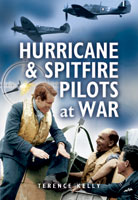By Hellship to Hiroshima (Hardback)
Imprint: Pen & Sword Military
Pages: 288
Illustrations: 56
ISBN: 9781844154036
Published: 15th June 2006
Last Released: 1st August 2007
(click here for international delivery rates)
Order within the next 1 hour, 35 minutes to get your order processed the next working day!
Need a currency converter? Check XE.com for live rates
| Other formats available | Price |
|---|---|
| By Hellship to Hiroshima Paperback Add to Basket | £15.99 |
| By Hellship to Hiroshima ePub (4.5 MB) Add to Basket | £6.99 |
Taken prisoner in Java, Terence Kelly's captivity was full of incident. He was witness to barbaric cruelty and suffering particularly on the journey packed into a filthy cargo ship under atrocious and inhumane conditions.
Once in Japan, he was a slave in the Hitachi shipyards where he got to know other Japanese and learn their language. His book reveals more about the psyche of his captors than other similar works. His Hiroshima camp was unique and was possibly the best camp in which the Japanese held POWs. Many of the inmates were influential men, who knew the Far East and had held important posts. The interaction between POWs and captors was fascinating and his book offers a rare insight into the Japanese character, as unthinkable defeat and humiliation became a reality.
Kelly's account of the A-Bomb attack and the chaos that followed it is fascinating and rare.
"When I look back on my own captivity", writes author Terence Kelly in his disarmingly honest Preface to By Hellship to Hiroshima, "I cannot just dismiss those three-and-a-half years as an ugly experience best forgotten..." And there is a different resonance to this account of the writer's experiences following the fall of Java in 1942, initially as a prisoner in the appalling Boei Glodok Gaol and later, in a Camp on the Island of Innoshima which he believes to have been "quite unique" in the annals of POW experience. There, in Hiroshima 5, conditions were, we are told, better than most and there was a remarkable combination of men. In addition to RAF and volunteers there were those of the Hong Kong Volunteer Defence Corps, with high-powered professional backgrounds including in the law, and Japanese-speakers. How this unorthodox arrangement worked out in practice is something explored in this book, which also seeks, without rancour, to enable the reader to view the Japanese in a "broader light" than is sometimes the case. No attempt is made to sanitise his captors, however, and we glimpse the dreaded Kempei Tai in action, as well as "guards whose sanity one sometimes doubted." We learn how prisoners had to loot to survive, and about varying degrees of effectiveness in terms of sabotage on the dockyard. To get there in the first instance, they had to endure the horrors of the hellship Dai Nichi Maru, and this Terence describes in detail.
Stephanie A. Jefford
Contrast is provided here and there with some stylish prose and fine descriptive writing, as in the manner in which, in onomatopoeic style, wartime Batavia is brought to life for us by the author and there are some superb illustrations from Kelly's fellow survivor Geoffrey Coxhead. There are insights into Japanese art and legend, and much more besides.
The concluding chapters make compelling reading, and the Epilogue on Hiroshima then and now, incorporated in this new edition, is truly memorable and, in some ways, most interesting of all. This dignified, balanced and uplifting book may contain a few surprises for the general reader and contribute to a more nuanced understanding of the bigger picture that will be of value to historians and researchers.
WWII: Atomic Bomb dropped by the US on Hiroshima, Japan
6th August 1945
Hiroshima was devastated when an atomic bomb ('little boy') is dropped by the US B29 'Enola Gay'.


















